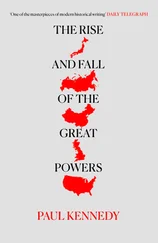South-east Asia’s political leaders, and many of the region’s businessmen, had a completely different explanation for their success: it was, they said, the result of ‘Asian values’. Chapter 1 looks at the rise of the ‘Asian values’ philosophy and why it is being discredited. According to its proponents, Asians are different from westerners in that they are hardworking and have a greater respect for education, family, community and government. The people of Singapore or Burma are thus more concerned about collective rights than individual rights and will therefore not necessarily demand the same things as westerners did at the various stages of economic development: free trade unions, liberal democracy, an independent judiciary, religious and sexual freedom and so on. Strong, even authoritarian governments – the argument goes – have meanwhile delivered both economic growth and political stability for the benefit of all. They should continue to do so unimpeded by meddling foreigners or domestic dissidents who want to impose alien values on Asians. The argument has struck a chord for some American and European politicians and business executives, who not only agree that it is right for Asia but believe that some of its tenets should be applied in western countries afflicted by chaotically inefficient democracy, violent crime and moral decay. But the ‘Asian values’ theory has been dismissed as nonsense by its critics in Asia and the West. They say it is merely an excuse for authoritarian governments to stay in power, depriving their subjects of rights which are not ‘western’ but universal. They also point out that it is bizarre suddenly to attribute south-east Asia’s recent success to Asian culture, when for centuries western intellectuals put the opposite case: that Asia’s economic backwardness was the fault of supposedly Asian cultural traits such as laziness and lack of enterprise. By 1997, support for the idea of attributing the region’s success to ‘Asian values’ was in decline, eroded by economic and environmental disasters in southeast Asia and by growing evidence of a popular desire for democracy. Yet much damage had already been done. Blinded by pride in their new Asian identity, south-east Asian leaders had failed to prepare for the political, social and commercial crises about to erupt in front of them.
Political upheaval in the region, the subject of chapter 2, is proving to be as exciting and unsettling as the slow rise of liberal democracy in industrial Britain. Greater wealth has swollen the middle class in countries such as the Philippines and Thailand, and these well-educated people quickly lose patience with heavy-handed governments. The crowds of pro-democracy demonstrators in Bangkok who helped to bring down a military-led Thai government in 1992 (after a coup d’état the previous year) were notable for the number of young professionals – stockbrokers, lawyers, university professors – carrying mobile telephones. Five years later, that process led to the formulation of a new, more liberal constitution for Thailand. Granted, middle-class activism is not automatic. As long as governments are delivering stability and economic growth, the more prosperous citizens of countries such as Indonesia, Singapore and Malaysia will happily forgo political liberties while they enjoy the benefits of a modern consumer society. Indeed, they are frightened of losing what they have already gained. But such conservatism is fragile, because it depends on the belief that the existing regime is better for economic growth and political stability than any alternative. The systems of patronage binding politicians and businessmen are fragile too, because the deals on everything from road-building contracts to the allocation of cheap shares in privatized telephone companies are all built on the assumption of rapid and continued economic growth. What happens when the gravy train stops? In Indonesia, the urban elite, including ethnic Chinese business magnates and Indonesian yuppies, quietly supported President Suharto’s leadership for decades while the economy expanded. But by the time south-east Asian financial markets crashed in 1997 they were understandably nervous about whether the economy could sustain the corruption, nepotism and cronyism to which Indonesia was particularly prone. In 1998 Suharto was ousted after pro-democracy demonstrations and outbreaks of looting in which hundreds of people were killed. Investors who had done deals with the president’s children and friends began to regret their alliances with discredited people who only months before had been the most influential business contacts in Indonesia.
It is not only the middle classes who are pushing for change. The poor have benefited from the industrial revolution, but not nearly as much as the rich. Throughout south-east Asia, peasant farmers and the urban underclass have started to complain about the widening gap between them and their richer compatriots. In Thailand, hundreds of peasants camped repeatedly outside parliament in Bangkok in the 1990s demanding redress for a range of grievances: low crop prices, for example, and the government’s failure to pay compensation for land submerged by reservoirs for hydro-electric dams. In Indonesia, people have staged demonstrations against the building of supermarkets; big new shops are said to be of use only to the rich and to put local traders and hawkers out of work. Such protests often take on disturbing religious or ethnic overtones, and there are plenty of real or imagined grievances for people to seize on as an excuse for violence. Most big businessmen in south-east Asia are ethnic Chinese, so it is usually the Chinese who build the supermarkets and suffer the consequences if shops are destroyed or looted. Rioters frequently burn down churches in Indonesia, too, identifying them with the minority Christians in a country where most people are Moslems. Neither the rural nor the urban poor feel they can hope to taste the fruits of industrialization that the rich – with their big cars, private schools, foreign travel, expensive night-life and mobile telephones – so ostentatiously relish. The situation is bearable when the economy is growing fast, unemployment is low and wages are rising faster than inflation – in other words when even the poor feel that this year is better than last. But the hitherto remarkable equanimity of the underclass could easily vanish in a real economic recession. (Until 1997 south-east Asia became so accustomed to rapid growth that ‘recession’ was loosely used in the region – it could mean annual growth of 5 per cent rather than an actual contraction of the economy.)
Another reason to expect political change is that a handover from one generation of leaders to the next is imminent. Those who experienced British, French or Dutch colonial rule and fought or campaigned for independence – such as Mahathir Mohamad of Malaysia, Lee Kuan Yew of Singapore, the elderly communists of Vietnam and Laos and ex-President Suharto of Indonesia – have sought to differentiate themselves from their former colonial masters. They inherited parliaments, courts and civil services (or, in the case of the communists, imported their models from the Soviet Union), but they moulded them to suit their own ambitions, suppressing dissent and arguing that strong government was essential for nationbuilding. Younger citizens, including the new generation of politicians, tend to be more liberal. From Burma in the west to Vietnam in the east, there was intense public interest in news of the South Korean trial of the former presidents Chun Doo-hwan and his successor Roh Tae-woo; the two generals, quintessential Asian authoritarians who pursued economic growth with ruthless determination, were condemned to death and prison respectively (though both were subsequently pardoned and released) for their corrupt and brutal rule of South Korea in the 1980s and early 1990s. The question asked in south-east Asia, sometimes openly, sometimes sotto voce, was: ‘Will there not come a time when we can do the same in our country to bring our leaders to account and usher in a better society?’
Читать дальше












